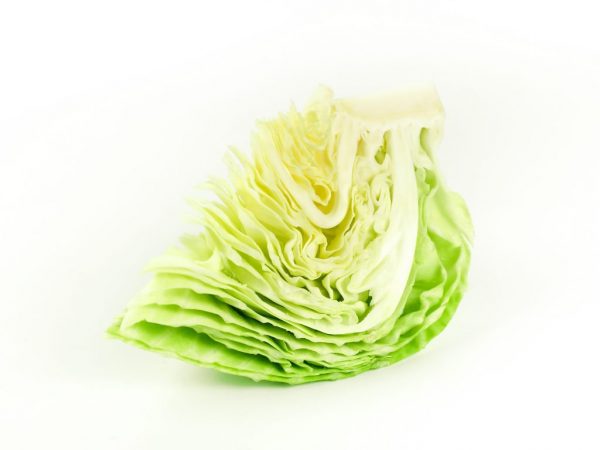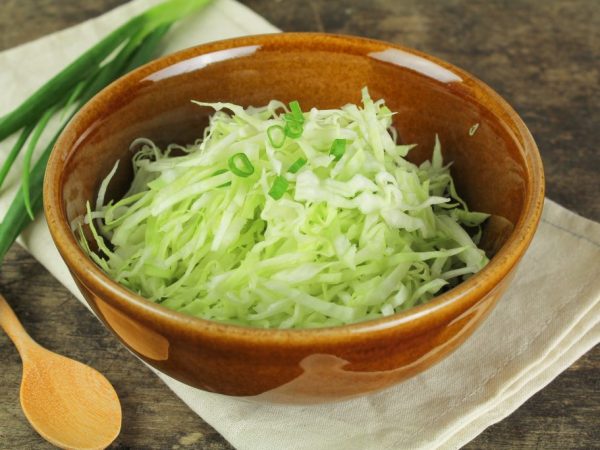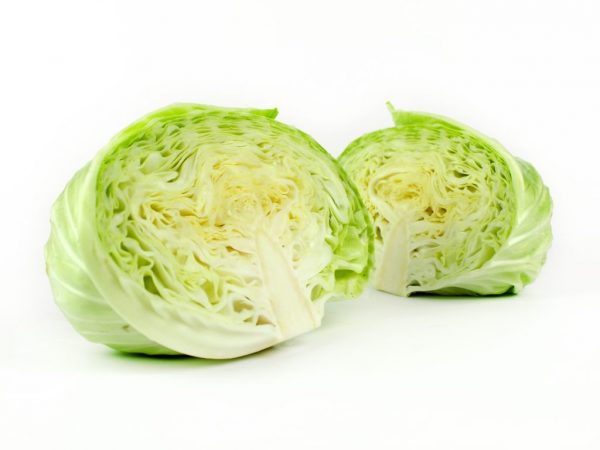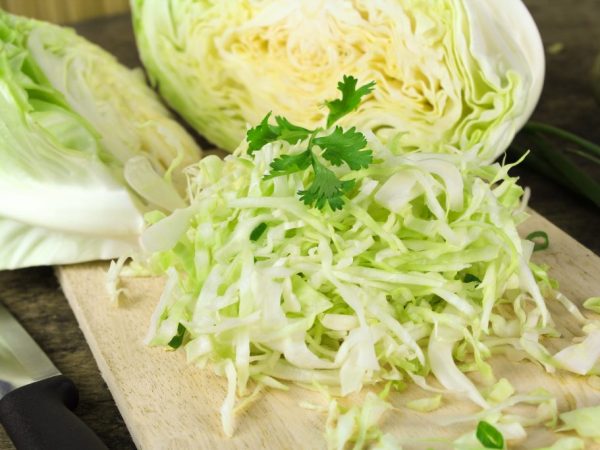The benefits and harms of cabbage
Vegetables are one of the most important foods in the human diet. Let's consider what is the nutritional value of cabbage and what are the benefits and harms of white cabbage for the body.

The benefits and harms of cabbage
Description of culture
Scientists call the Mediterranean coast the birthplace of a biennial cruciferous plant.
Cabbage has broad, bare leaves, thicker underneath and thinner in the middle. The scales tightly fit the stump, creating a large basal rosette. In the first year of development, a head of cabbage is formed, and if it is not cut off, a thin stem with plates and yellow tassels-flowers appears at the top.
The plant is grown in seedlings, although in warm regions the crop can be sown directly into the ground. There are hundreds of varieties and varieties of the popular vegetable. For example, black cabbage, but many people prefer to consume white cabbage.
Composition
The plant belongs to unique products. The amazing content of the elements has a positive effect on the human body. To understand why cabbage is useful, you need to carefully study all of its components.
Nutritional value
Energy value is one of the benefits of white cabbage. The product consists of water and fiber, therefore it has the lowest calorie content: about 27 kcal per 100 g. Young leaves are about 5% less nutritious than old ones. A stew is 3 times more satisfying than a fresh salad.
The composition of cabbage is very rich. Cabbage contains little fat: no more than 1 g per 100 g, slightly more proteins - 2 g, and carbohydrates - 5.4 g. If you subject the vegetable to heat treatment, the energy value increases. BJU stew is:
- 3.45 g protein;
- 3.7 g fat;
- 7.6 g of carbohydrates.
The body quickly assimilates the elements, but they are not stored as fat. This property contributes to weight loss.
Vitamins
The nutrients in fresh cabbage are a set of all the elements necessary for the human body. The content of vitamin K in 100 g of a vegetable is more than 60% of the daily requirement. The component affects blood clotting and is needed for healthy protein synthesis.
The product contains ascorbic acid, the specific gravity of which is approximately 55% of the daily dose. Elements from group B, E and PP are present in small amounts. There is a lot of folic acid - over 20%. The substance is useful for the development of the circulatory system and immunity.
Fresh cabbage also contains antiulcer vitamin U. The component is not synthesized by the body, so only food is the source of intake. The element regenerates the gastric mucosa, and also participates in the synthesis of B4.
Minerals
Fresh and fermented cabbage is high in potassium - almost 200 mg per 100 g. Together with magnesium and sodium, they support healthy heart function.
There is not as much calcium and phosphorus in the product as in milk, but regular consumption of food contributes to the formation of bone tissue. Chem. elements: iron and copper - help the formation of new blood cells. Minerals - sulfur, chlorine and zinc - are few in number, but in conjunction with others, they are responsible for the proper functioning of the body.
The usefulness of cabbage is minimized by improper plant growth. The tissues, especially the stump, accumulate toxins that are toxic to humans.
Benefit

Cabbage has medicinal properties
Cabbage in the diet of people does not take the last place, but rarely does anyone think about the advantages of the product. If the product is used correctly, the benefits of cabbage will be noticeable after several uses. Consider the medicinal properties of the vegetable and the areas in which it is used.
Weight loss
The benefits of cabbage for the human body are enormous, therefore it is often used in dietary nutrition. The composition contains a lot of water and fiber, which have a positive effect on the body with obesity. Complex carbohydrates do not increase weight, but help to activate the metabolism.
The vegetable removes excess water from the body, relieving swelling. To stimulate digestive processes, it is recommended to use juice squeezed from the leaves. The choline element helps to normalize body fat, and the abundance of fiber cleans the digestive tract from slagging and improves stool. Vegetables can be eaten in any quantity and form without fear of gaining weight.
Ulcer
Cabbage is very useful for diseases of the stomach and intestines. It contains a rare vitamin U, which is used in the treatment of disorders of the mucous membrane of the digestive system. In addition to the main treatment, doctors recommend drinking squeezed juice with honey.
Food made from sour or fresh food has a positive effect on tissue regeneration. The composition contains substances that reduce the acidity of the stomach. They make the internal environment less aggressive, which helps in the recovery process. The properties are also preserved in the revised form.
Avitaminosis
Sauerkraut contains a large amount of vitamin C, which has a beneficial effect on the entire body.
Lactic acid and acetic acid have antibacterial properties, killing viruses and improving the immune system. If you need to quickly make up for the lack of elements, just drink a glass of brine. The concentration of all components in it is 2 times higher than in fibers.
Anemia
Eating fresh leaves increases hemoglobin, which has been shown in the treatment of anemia. Of course, a vegetable cannot completely replace medicines, but it will help fill in the missing components and improve the effect of chemicals.
Bronchitis and asthma
Cabbage juice helps to remove phlegm in bronchitis. The juice has long been known as a good expectorant with mild antimicrobial properties. In addition, the liquid soothes asthma coughing attacks.
Liver disease

The vegetable relieves inflammation of the liver
When treating liver problems, fresh cabbage salads are shown every day. The substances included in the composition help to reduce the inflamed organ and improve the excretion of bile.
Other diseases
The vegetable eliminates pain in the muscles after exercise and activates the brain and nervous system. With hematomas and joint diseases, it provides relief, removing unpleasant consequences.
The product contains enzymes that protect the body of a man from the appearance of adenoma and prostatitis. With regular use, the duration of intercourse increases. In women, inflammatory processes in the pelvic organs are eliminated.
For beauty
The beneficial properties of the composition of cabbage are used in cosmetology for girls and women. Freshly squeezed juice has a mild whitening effect. To remove age spots, add a couple of drops of lemon to the product, and then wipe problem areas twice a day. The first results are visible after 7 days.
Fresh masks reduce wrinkles and improve skin tone. Fresh leaves relieve eye puffiness and fatigue. The raw materials are crushed in a blender, after which the finished mass is put on the eyelids. If you add honey, the remedy will help fight crow's feet.
The substances in the vegetable strengthen the hair follicles and reduce the intensity of sebum secretion. To combat hair loss, masks are regularly made from juice or added to water for rinsing. Such procedures significantly improve the condition and appearance of the hair.
Harm
Consider a number of important contraindications.
Pancreatitis
With inflammatory processes in the pancreas, the symptoms are often the same as with an ulcer. Patients mistakenly diagnose themselves, after which they begin to self-medicate. Eating the wrong foods will make your condition worse.

You can not use cabbage for pancreatitis
For people, the harm of fresh cabbage with pancreatitis is colossal. The contained fiber negatively affects the diseased organ, activating unpleasant manifestations. Doctors warn that raw vegetable is strictly prohibited, and after heat treatment and fermentation, you can eat no more than 100 g per day. The product must be gradually introduced into the menu, observing the reaction of the body.
Bowel disease
Contraindications to use refer to patients with irritable bowel syndrome. An abundance of coarse fiber, calcium and protein impairs health. Discomfort from food is exacerbated by bloating and pain. If it is easy for a healthy person to overcome the symptoms, then the patient will have to seek medical help.
Childhood
Cabbage can also harm babies under 8 months old. If consumed too early, the product will cause constipation and discomfort. In addition, even the minimum content of natural vinegar is a threat to the baby's fragile body. Despite its nutritional value, food contains histamine, which causes allergies.
Raw white cabbage can be given to children only after they reach the age of three, if they chew food well and do not have problems with the digestive system.
Other problems
Do not eat cabbage after surgery. The body has not yet recovered, so you need to choose lighter meals. Before making adjustments to the diet, it is better to consult a doctor.
Eating is dangerous for gallstones and kidney failure. The healing properties turn into harm and exacerbate sleeping problems. The disadvantages include the fact that the product contains goitrogens that increase the need for iodine and are dangerous in diseases of the thyroid gland, during pregnancy and lactation.
Conclusion
Cabbage can do both good and bad. Before eating a vegetable, be sure to read the contraindications.


